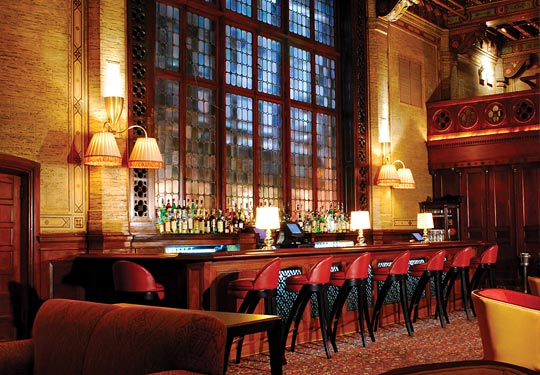
1. Ask for the recession special.
“In this economy, everything is negotiable. You’re doing yourselves a disservice if you don’t haggle,” says planner Jennifer Gilbert.
2. Avoid Saturdays in April, May, June, and September.
You’ll be able to guarantee fewer guests at a lower price per head. For example, book the Plaza on a Saturday night in June, and you’ll need to guarantee at least 250 at $400 per head; a Friday in July mandates only 150 at $325 a head. Pick a less popular month and save a whopper: The difference between a 250-person Plaza wedding on a Saturday evening in June ($133,762) and an identical event in July ($108,682) is $25,080!
3. Watch the guest list.
If you can’t cut it down, the following are deals for 300-plus guests: Grand Prospect Hall in Brooklyn ($80 per head, up to 1,000); Douglaston Manor in Queens ($105 per head, up to 300); Remi in midtown ($125 per head, up to 400); and Guastavino’s uptown (from $200 per head, up to 500). Regardless of party size, don’t lowball your head count—you’ll get a better rate if your guess isn’t too conservative. Also, avoid a penalty by making adjustments before their head-count deadline—usually 72 hours to two weeks before the event.
4. Have a cocktail party instead.
The Campbell Apartment in Grand Central charges $85 per head (for at least 50 guests), plus a $4,000 fee, for a two-hour cocktail party with open bar. Compare that to $200 per head, plus an $8,000 fee, for a three-hour sit-down.
5. Avoid lofts.
Rentals, elevator charges, and security fees can really add up. But if you’re determined, try Ramscale (from $2,700 for its North Studio and Terrace for eight hours) or Smack Mellon (from $5,000 for twelve hours), both in Dumbo; the Foundry in Long Island City ($7,100 for twelve hours); or Midtown Loft and Terrace ($6,500 for eight hours). The good news: “If you’re at a loft—hotels and private clubs usually don’t allow this—you can buy liquor wholesale or from your neighborhood store. Get better pricing and negotiate to return unopened bottles,” says planner Loulie Walker.
6. Be happy with the in-house vendor list.
If not, you’ll likely be charged to bring in outside vendors, if that’s even allowed. “Say it’s the florist—they’ll typically charge you an additional 10 to 15 percent of the total floral-design bill,” says planner Marcy Blum. Preferred vendors range from bands and lighting and sound companies to bakers and wine purveyors: “A lot of venues charge cake-cutting fees as high as $10 a slice if you bring it in from an outside vendor,” says planner Xochitl Gonzalez. “You shouldn’t pay more than $2. Forgo their dessert for a lower cutting fee. Also, many venues charge corking fees of up to $15 per bottle if you bring in your own. You shouldn’t pay more than $5,” she says.
7. Don’t forget to budget the service charge, gratuity, and tax.
You may be budgeting for $150 per head when it’s actually $200 or more. Says Gonzalez: “The service gratuity can be as much as 23.5 percent of the food and beverage, nontaxable; the service charge is what the property wants it to be, as much as 30 percent, and taxable.”
8. Examine sample contracts.
“Narrow your list to three venues and ask each for a contract; compare add-ons and overtime,” advises planner Lisa Green. “All charges must legally be in there.”
9. Keep to your curfew.
“Negotiate a flat overtime fee. If it has to be a per-person charge, make sure it’s not based on the guaranteed number of guests. If you guarantee 300 and at the sixth hour there are only 50 people still dancing, the venue will still charge you overtime on all 300,” says Gilbert. Ugh.

• Have a High-end Reception on a Shoestring Budget
• A List of Venues to Party In
• Whom to Tip and How Much to Give
• Common Spending Mishaps and Mayhem